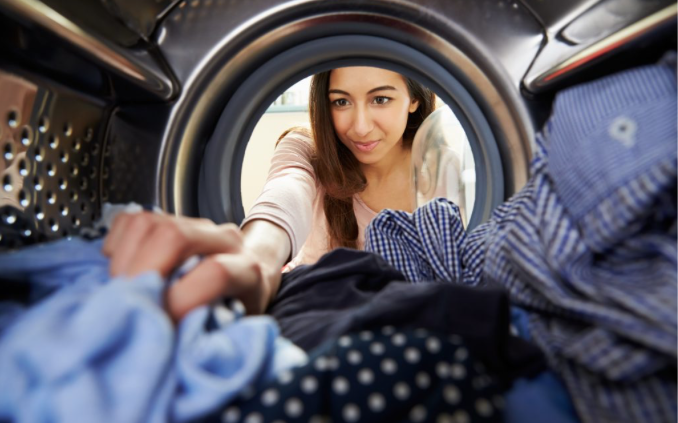This is how water softeners work for the washing machine
We all know them: the pictures of calcified heating rods from advertising. What looks unsavory in the first place also increases energy consumption and detergent costs. Calcareous water can also clog pipes. When faced with such problems, many think of water softeners. These are available in liquid form, as tabs or as a powder. Read here what limescale does in the washing machine and how well a water softener works.
How calcareous water affects washing
Before deciding for or against a water softener, it is important to understand what the limescale is doing in the washing machine. Lime comes from the tap water in your home. However, not all water is equally calcareous; a distinction is made between different degrees of water hardness. With hard water Far greater problems are to be expected than with soft water.
The lime affects the washing machine in two ways. Firstly, it is deposited on the heating rod, in pipes or in the washing drum. Lime is dissolved in the water in the form of calcium and magnesium. If water is heated, the lime precipitates and then settles on surfaces. It works the same way when the water evaporates. In any case, limescale deposits shorten the service life of the washing machine. The quality of the device and how often it is in use have the same effect. A second unpleasant effect unfolds with the detergent dosage. Hard water makes water solubility more difficult. This means that the limescale “neutralizes” the detergent and with hard water you will have to use a lot more of it to get the laundry clean.
Problems with the calcified heating element
If limescale is deposited on the heating element, this increases energy consumption. It works like the down jacket in winter. The lime or the jacket prevent heat from being transferred directly to the environment. If the calcified heating rod is heated up, it gets hotter itself, but the water only heats up slowly. This means that more energy is used to bring the washing machine to operating temperature. At some point, however, the heat will become too much for the heating element – it will break.
How long a heating element survives depends on several factors. This primarily includes the hardness of the water, but also how energy efficient the machine is and how often it is used. Do you live in a region with soft water, have high-quality equipment and wash twice a week? Then your machine will likely survive for a long time. To protect against calcification, special water softeners are advertised. Very few consumers know, however, that most heavy-duty detergents already contain such substances. However, they can only delay calcification. After a certain service life, the machine simply cannot withstand the lime.
Does a water softener for the washing machine pay off?
One thing is certain: from a certain degree of water hardness, your washing machine suffers with every wash. Even with moderately hard water, you have to increase the amount of detergent to achieve the same washing performance. If you rely on high-quality detergent, you are probably already working with a water softener. Alternatively, you can also use a softener for each wash and dose your detergent for soft water. It’s not cheap in either case. Some calculation examples can be found on the Internet. If you use a softener for every wash, you could pay for a washing machine repair for the same money after a few years.
But even if you use a softener, the inside of the washing machine calcifies. Lime stubbornly sticks to the heating element in particular, as it burns in from the heat. The heating rod is hidden inside the machine, so you cannot reach it for cleaning. Unlike in advertising, you can only delay decalcification with a softener, not prevent it completely.
Another option is to use a water softener. This is installed for the entire house or apartment and only allows soft water to flow through your own four walls. This significantly extends the service life of the washing machine. Less detergent is required and there is no need for water softening additives. But also here the lime settles after the time. A water softener is an expensive business, but by reducing the amount of detergent and softener additives you protect the environment.
A somewhat curious approach is the use of rainwater. Some specialist blogs recommend this. Rainwater would actually be perfect for washing clothes as it has almost a degree of hardness of zero. How practicable and hygienic this access is remains to be seen.



